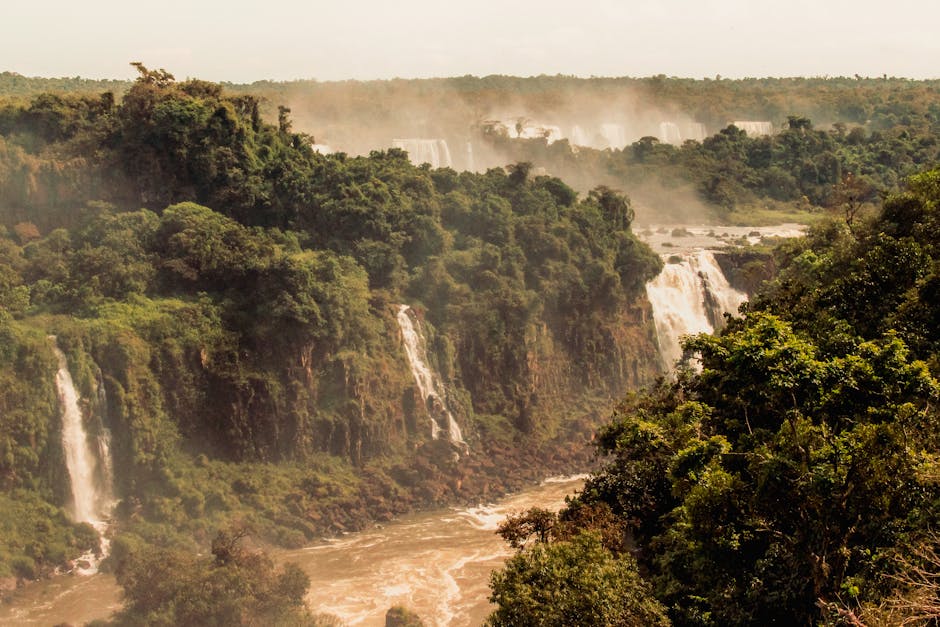- Dreaming of Samba, Sun, and Caipirinhas? Let’s Talk Visas!
- First Things First: Do You Actually Need a Visa?
- Meet the Brazilian e-Visa: Your Digital Ticket to Paradise
- Applying for Your e-Visa: A Step-by-Step Walkthrough
- Step 1: Gather Your Digital Documents
- Step 2: Fill Out the Online Application Form
- Step 3: Upload and Pay
- Step 4: The Waiting Game and Approval
- Beyond Tourism: A Peek at Other Brazilian Visas
- You’ve Landed! Navigating Immigration in Brazil
- Staying on the Right Side of the Rules
- Can I Extend My Stay?
Dreaming of Samba, Sun, and Caipirinhas? Let’s Talk Visas!
Ah, brazil! The name alone conjures images of sprawling golden beaches in Rio, the thunderous power of Iguazu Falls, and the vibrant, rhythmic pulse of Carnival. It’s a country that dances to its own beat, a massive, diverse landscape of natural wonders and intoxicating culture. If you’re feeling the pull to explore this South American gem, you’re in for the adventure of a lifetime. But before you start packing your Havaianas and practicing your portuguese, there’s a tiny bit of homework to do: understanding Brazil’s visa requirements.
Navigating international entry rules can feel a bit like wading through a jungle, but don’t worry! We’re here to be your friendly guide, cutting through the confusion to make the process as smooth as a bossa nova tune. Especially with recent changes, it’s more important than ever to have the right information. So, grab a coffee (or a caipirinha, we won’t judge!), and let’s dive into everything you need to know about getting your visa for Brazil.
First Things First: Do You Actually Need a Visa?
This is the million-dollar question, and the answer depends entirely on your passport. Brazil’s visa policy is largely based on reciprocity. In simple terms, if Brazil’s citizens need a visa to visit your country, you’ll likely need one to visit Brazil.
For years, citizens of the United States, Canada, and Australia enjoyed visa-free travel to Brazil. However, that’s changing. The Brazilian government has decided to reinstate the visa requirement for passport holders from these countries. While the date has been pushed back a few times to ensure a smooth transition, it’s crucial to plan for this. As of the latest updates, the requirement is set to take effect on April 10, 2025. This means if you’re a citizen of the US, Canada, or Australia traveling on or after this date, you will need a visa.
On the other hand, many travelers can still enter Brazil visa-free for tourism for up to 90 days. This includes passport holders from the United Kingdom, most European Union countries, New Zealand, and many others in Asia and Latin America. Citizens of Mercosur countries (like Argentina, Uruguay, and Paraguay) can often enter with just their national ID card.
Our Golden Rule: Policies can change! Before you book anything, the most reliable source of information is always the official website of the Brazilian consulate or embassy in your country. A quick check there can save you a world of headaches later.

Meet the Brazilian e-Visa: Your Digital Ticket to Paradise
The good news for those who now need a visa is that Brazil has streamlined the process with an electronic visa, or “e-Visa.” This is the most common type of visa for tourists, known officially as a Visit Visa (VIVIS). You can apply for it entirely online without having to mail your passport or visit a consulate in person. Phew!
A VIVIS is quite versatile. It’s not just for soaking up the sun on Copacabana Beach. It also covers a range of activities, including:
- Tourism and sightseeing
- Visiting friends or family
- Attending business meetings, conferences, or trade fairs (as long as you aren’t being paid by a Brazilian source)
- Participating in artistic or sporting events
- Transit through a Brazilian airport
Essentially, if you’re not working, studying, or engaging in paid activities in Brazil, the e-Visa is likely the one for you. It’s designed to be convenient, fast, and entirely digital.
Applying for Your e-Visa: A Step-by-Step Walkthrough
Ready to get started? The online application is straightforward, but it pays to be prepared. Let’s break it down into simple, manageable steps so you can get it right the first time.
Step 1: Gather Your Digital Documents
Before you even open the application website, get all your documents scanned and saved on your computer. This will make the process a breeze. You’ll typically need:
- A Valid Passport: It must be valid for your entire stay and have at least two blank pages for stamps. You’ll need a clear, digital copy of the main information page.
- Digital Passport-Style Photo: A recent, clear, front-facing photo with a plain white background. Think of the photos you take at a pharmacy kiosk, but in digital format. There are strict specifications, so check the requirements carefully.
- Proof of Travel: Your round-trip flight confirmation or a detailed itinerary showing your entry and exit from Brazil.
- Proof of Financial Solvency: This is to show you can support yourself during your trip. Recent bank statements or a credit card statement are usually sufficient.
- A Valid Email Address: This is where all communications and your approved e-Visa will be sent. Double-check for typos!
- Credit or Debit Card: For paying the application fee online.
Step 2: Fill Out the Online Application Form
Head to the official e-Visa processing website (be sure to use the official government-linked site to avoid scams). The form will ask for personal details, passport information, and your travel plans. Take your time, fill everything out accurately, and double-check your entries before submitting. Honesty and accuracy are key!
Step 3: Upload and Pay
This is where your prepared digital documents come in handy. You’ll be prompted to upload each file. Pay close attention to any file size or format restrictions (usually JPG or PDF). Once your documents are uploaded, you’ll proceed to the payment page. The fee is around $80-90 USD but can vary, so check the current price.
Step 4: The Waiting Game and Approval
After you submit and pay, you’ll receive a confirmation email. Processing times can vary, but it’s often a few business days. You can usually track your application’s status online. Once approved, your e-Visa will be sent to your email as a PDF document. Congratulations! Print a copy (or two) and save a digital version on your phone. You’ll need to present the printed copy to the airline and to immigration upon arrival in Brazil.

Beyond Tourism: A Peek at Other Brazilian Visas
While the tourist e-Visa covers most travelers, Brazil offers a variety of other visas for different purposes. These are known as Temporary Visas (VITEM) and are generally more complex, often requiring an in-person consulate visit.
Here’s a quick overview:
- Student Visa (VITEM IV): For those enrolled in academic courses in Brazil. You’ll need an acceptance letter from a Brazilian educational institution.
- Work Visa (VITEM V): For individuals who have a job offer from a Brazilian company. This process is usually initiated by the employer in Brazil.
- Digital Nomad Visa (VITEM XIV): This is a fantastic option for remote workers! If you can prove a stable income from a foreign source, you can apply to live in Brazil for an initial period of one year, with the possibility of renewal. It’s one of the most popular new visa categories.
- Family Reunion Visa (VITEM XI): For those joining a family member who is a Brazilian citizen or resident.
If you’re considering any of these paths, your first step should be to thoroughly research the requirements on the Brazilian consulate website and potentially seek advice from an immigration specialist, as the documentation needed is much more extensive.
You’ve Landed! Navigating Immigration in Brazil
With your passport and printed e-Visa in hand, you’ve arrived! The final step is passing through immigration, which is handled by the Federal Police (Polícia Federal). The process is usually smooth. Approach the counter when called, and be ready to present:
- Your passport.
- Your printed e-Visa.
- The customs/entry form you filled out on the plane.
The officer might ask a few simple questions, like the purpose of your trip or how long you plan to stay. Just answer politely and honestly. They will stamp your passport, officially welcoming you to Brazil. Bem-vindo!

Staying on the Right Side of the Rules
Your visa and passport stamp will indicate how long you are permitted to stay. For tourists, this is typically up to 90 days. It’s incredibly important not to overstay your visa. Overstaying can result in daily fines and can complicate any future travel to Brazil.
Can I Extend My Stay?
In some cases, yes! If you fall in love with Brazil (which is highly likely) and want to stay longer, you can apply for an extension with the Federal Police *before* your initial 90 days are up. This can grant you up to an additional 90 days, but it’s not guaranteed. The maximum stay for a tourist in any 12-month period is 180 days.
Preparing for your trip to Brazil is part of the excitement. By taking a little time to understand the visa process, you’re setting yourself up for a stress-free journey, leaving you more time to focus on the important things—like deciding which beach to visit first or mastering the art of ordering a perfectly chilled *água de coco*. Your Brazilian adventure awaits!




